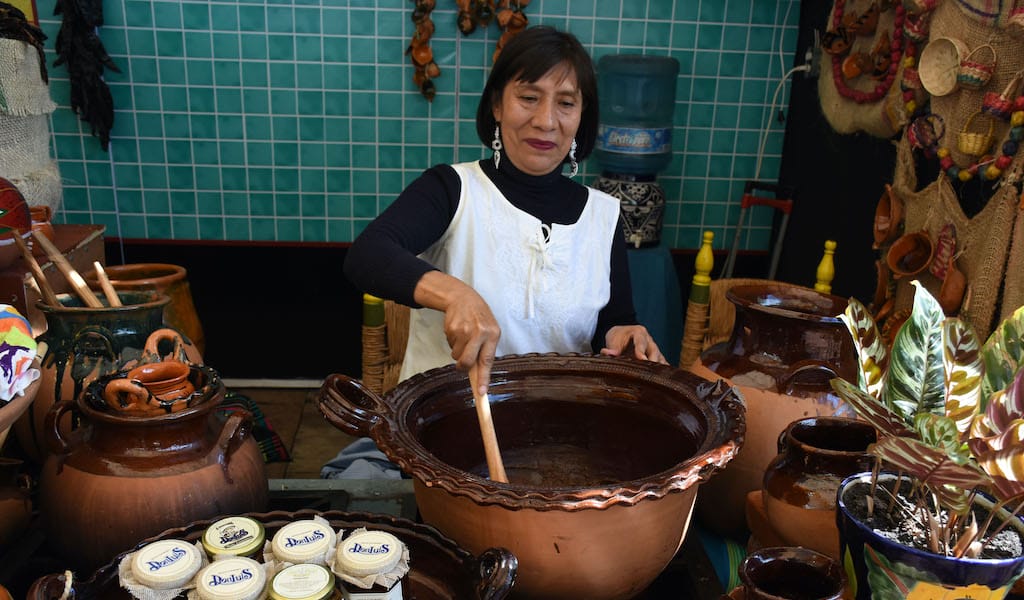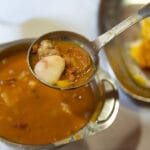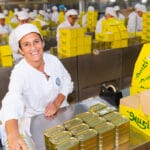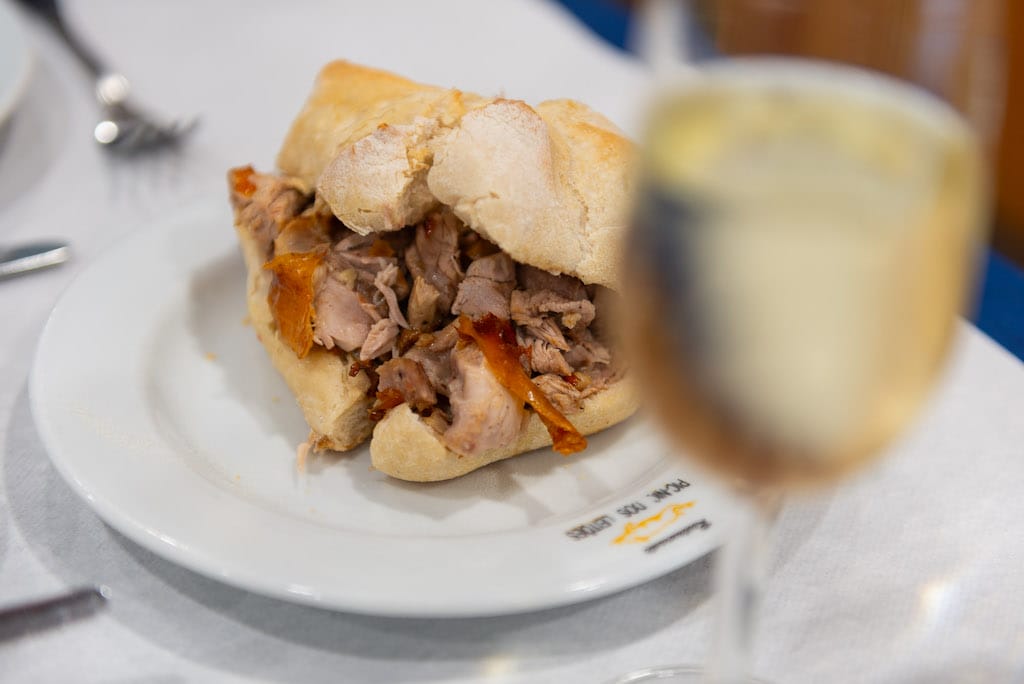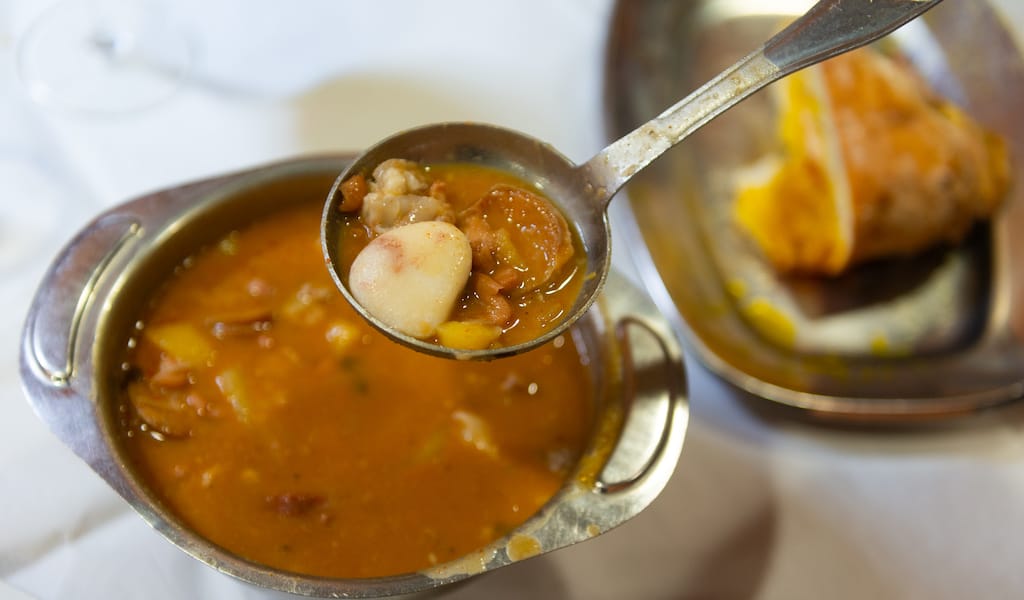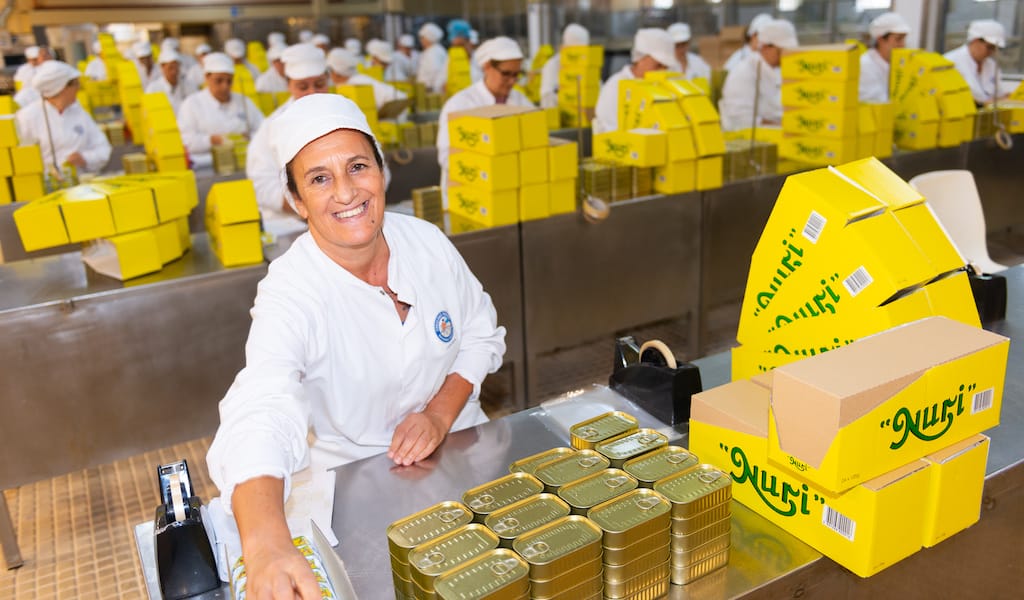If you like mole – and we still haven’t met anyone who doesn’t – then a visit to pueblo of San Pedro Atocpan in Mexico City’s Milpa Alta district and its National Mole Fair, which this year celebrates its 46th anniversary, is a must.
That the pueblo should host a mole fair makes perfect sense. San Pedro, located about two hours directly south of downtown Mexico City, is known (perhaps unofficially) as the Mole Capital of Mexico (other pueblos also stake their claim to this title). There are only about 9,000 residents and it’s believed that ninety percent of the are involved in some way in the production or sale of mole. Luis Alvarado, the owner of Moles Don Luis, figures there are 400 mole producers in the pueblo. “We are all related,” he said, “cousins, nephews…compadres.”
They’re all able to thrive because they sell throughout Mexico. Almost all the mole that’s eaten in Mexico City and 60 percent of the mole consumed in Mexico comes from San Pedro, where at least 20 different types of mole are made. Happily, all of the moles – including almendrado (the most popular), pipián, verde, manzana – are available at the fair.
What’s known as mole today – the thick, delicious sauce served atop meat, tortillas and a variety of other dishes – had a fairly humble beginning. In pre-Hispanic times, a sauce called chimulli or chilmole was served during festivals. “Chilmole is a salsa of chiles and almost no spices, just chile and tomatoes,” said Luís Gutierrez Romero, a retired history professor who is part of a group that chronicles life in the various communities of Mexico City. “It is something found in almost all the Mesoamerican cultures. It is the basis of mole.”

There are several stories about how something as simple as chilmole became something as complex as mole, which typically has at least twenty ingredients. “The myth speaks of mole being developed by a nun in the Santa Rosa convent in Puebla,” Romero continued, “but for me, this is only a myth. I believe the process of making mole has its origins in fiestas and where people prepared food, in the pueblos.” There are, in fact, several legends about how mole came about, including one crediting a monk and another stating that a miraculous wind blew the ingredients into a pot. When the Spanish arrived, they brought with them different spices and foods. “[These] were mixed with our chiles to make a salsa,” said Liboado Arista Osorio, the owner of El Sazón de la Abuelita, a restaurant in San Pedro. “It was this combination that led to mole poblano.”
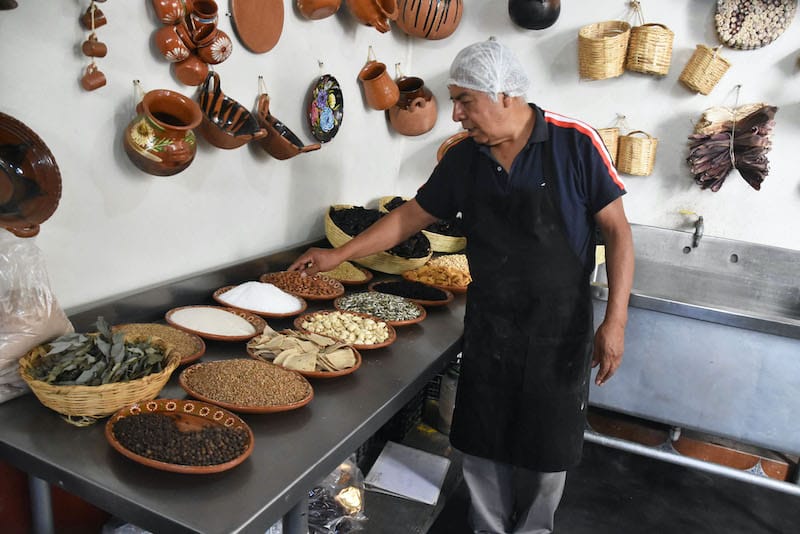
Romero, the cronista, said that when people from San Pedro went to Mexico City looking for work in the mid-1800s, “Some learned to make mole and then they brought it back to San Pedro. A few worked with friends and began producing commercial mole in 1945.”
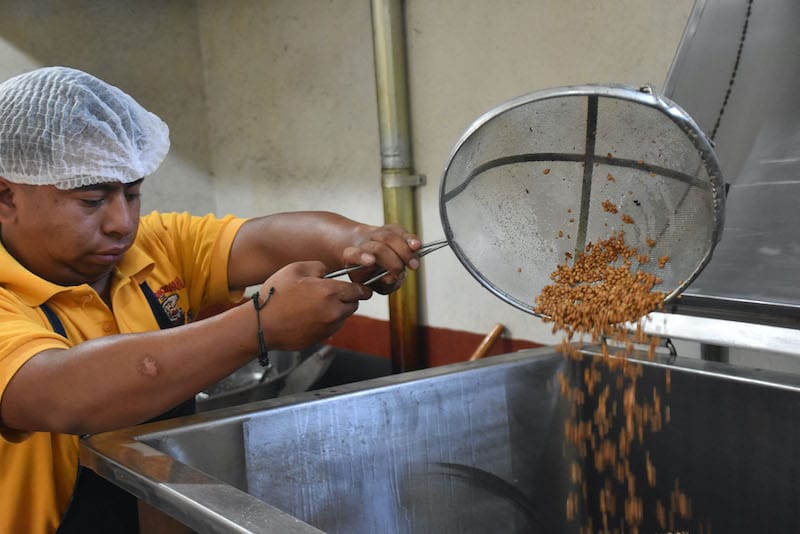
Alvarado started Moles Don Luis in 2008 and has had a stand at the fair every year since. “The formula for all moles is the same,” he said, “but then we add different spices or ingredients, giving each mole its particular flavor. Each has twenty-five to twenty-seven ingredients. The recipes, I learned from my mother. We have modified them a little over the years to adjust for flavor, a little sweeter, more acid, et cetera.” He paused a moment and added, “All my life has been in mole.”
The traditional way to make mole is to grind individual ingredients using a metate and volcanic stones, a time- and labor-intensive process, that, many believe, gives mole a special flavor. Obviously, this can’t be done on a commercial scale. Some producers did use volcanic grinding stones in their machines in the past but that’s no longer allowed. “The government stopped the use of volcanic rocks in 1990,” said Alvarado. “The rocks leave small pebbles in the mole.” Now, stainless steel grinders are used.
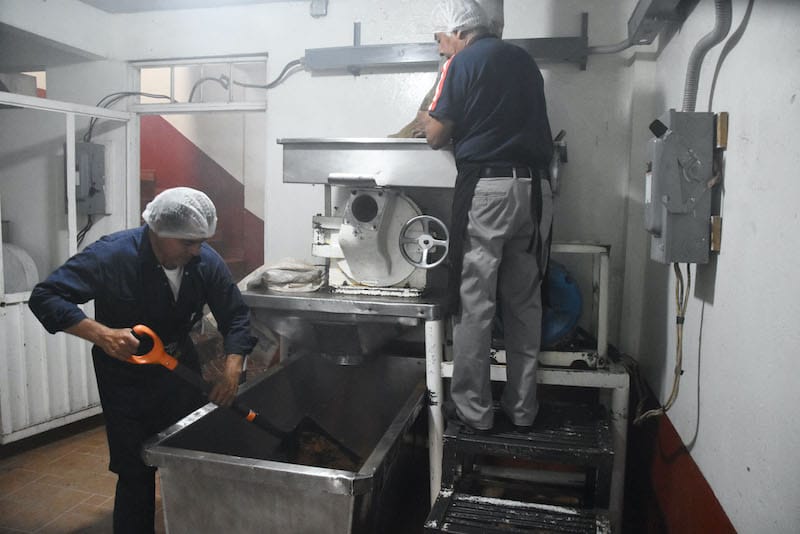
Alvarado makes mole in a small room on the second floor of a building on a side street, a short distance from San Pedro’s center.
“Today we are making mole de almendra con piñon (mole with almonds and pine nuts)” he explained. “We will make 170 kilograms [374 pounds]. There are twenty-four ingredients in this mole, including four chiles – ancho, mulato, pasillo and a little bit of chipotle.” In addition, there are raisins, three kinds of nuts, spices, cookies, tortillas and several types of seeds. After weighing the ingredients, the first step is to fry most of them. “This is the artisanal step,” he said. “It sterilizes the ingredients and increases their flavor.”
Ingredients like nuts take a few minutes to fry while the spices and chiles are done in seconds. Alvarado keeps a close eye on the process as workers pour the ingredients into the hot oil. “The raisins are done when they float,” he told me. “I know when the others are done by eye and by smell.”
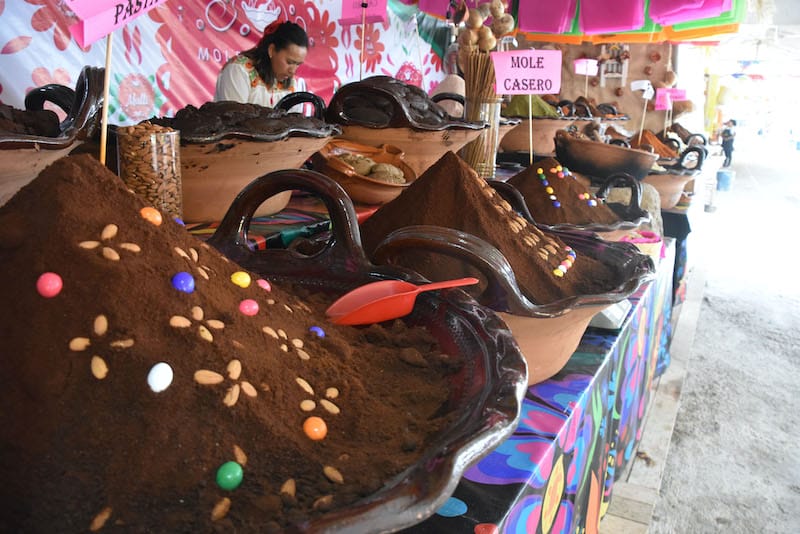
Smoke fills the room during the frying, which takes about an hour and a half. When that step is done, the ingredients are poured into a large grinder and ground for fifteen minutes. The resulting mix is sent through a chute to the first floor where it’s ground twice more. Alvarado typically makes three batches of mole a day, 2,000 kgs (4,400 pounds) a week and up to ten toneladas (22 tons) a month.

Alvarado is 70-years-old but has the energy of a man a couple of decades younger. It’s not clear how long he’ll continue to work or if he’ll ever stop. But if he should, Magali Alvarado Alvarez, his daughter, will continue the family business.
San Pedro is a walkable pueblo, with narrow, cobblestone streets. There’s a small park in the center with the San Martín chapel, a pretty pink building. A ten-minute walk away is the Parroquia San Pedro, built in 1680, and a few blocks from that is the Santuario del Señor de las Misericordias, a more recent addition to the pueblo. After visiting the fair, you probably won’t need a restaurant but, according to one estimate, there are around one hundred in town (along with some 150 shops selling mole to take home).
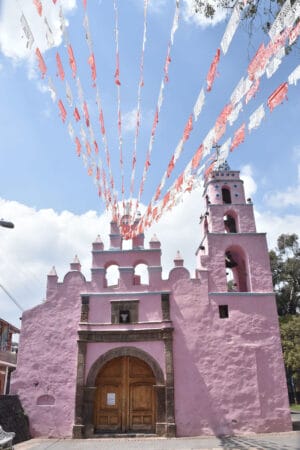
If you go: the fair, which continues until October 22, is held just outside San Pedro, in the Estadio Momoxco, located at kilometer 17.5 on the Xochimilco-Oaxtepec highway. Entrance Monday through Thursday is free, but it’ll set you back 10 pesos to enter Friday through Sunday. Parking is 65 pesos. There are 20 stands selling mole and 40 restaurants at the fair, each with one or two people in front tempting passersby with samples. It’s impossible to try them all, but part of the fun is deciding which mole to buy and where to eat. The most popular dish is a turkey leg covered with mole, which costs around 300 pesos. There are also mole enchiladas (enmoladas), sopes and a host of other foods. There’s an area with bars, music and rides for the kids. Depending on who you ask, the fair opens at 7:00, 8:00 or 9:00 a.m. and closes, according to one of the guards, “when the last person has left.”
Joseph SorrentinoJoseph Sorrentino
Published on October 12, 2023
Related stories
February 7, 2024
PortoAt first glance, there’s not much to see in Mealhada, a town in Portugal’s central inland Bairrada region about an hour’s drive south of Porto. If there is a main feature here, it’s probably the EN1, the country’s original north-south highway, which slices the town in half, providing a conduit for a seemingly never-ending parade…
January 19, 2024
LisbonIt’s an early example of guilt tripping. The story goes that a monk arrived in a Portuguese village, hungry and clever. He grabbed a rock and carried it door to door, claiming that it was his only ingredient, asking people if they would be kind enough to supplement it so he could make a meal.…
December 7, 2023
PortoMatosinhos, it could be said, has seen better times. In its heyday, the semi-industrial-feeling port city just north of Porto was once home to 54 fish canneries. Today, only two remain. Along the city’s wide, empty-feeling streets, some of the city’s former factories and their graceful Art Nouveau facades have been reappropriated as other businesses…







































